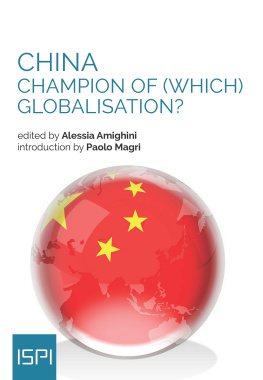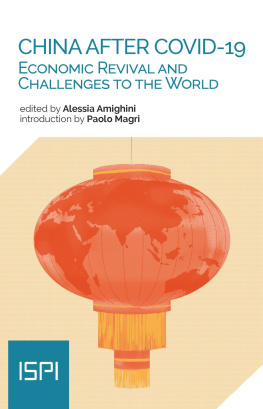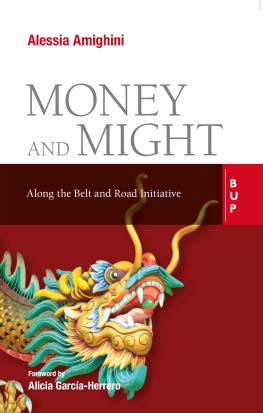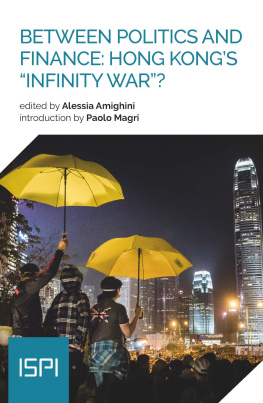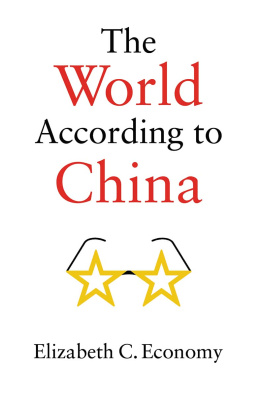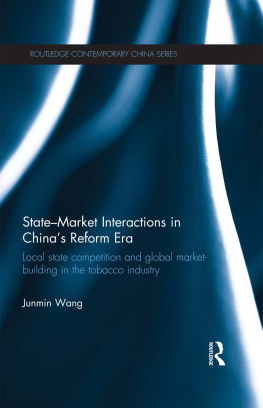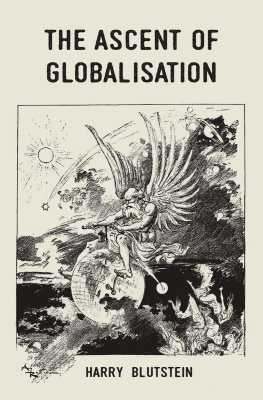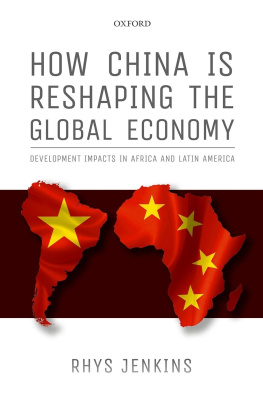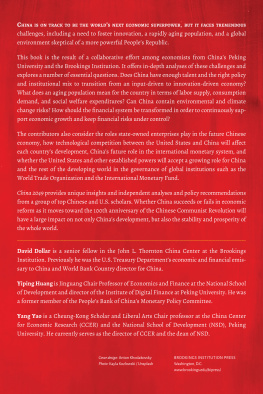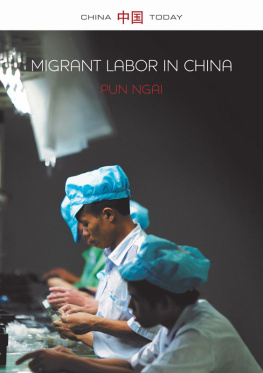2018 Ledizioni LediPublishing
Via Alamanni, 11 20141 Milano Italy
www.ledizioni.it
China: Champion of (which) Globalisation?
Edited by Alessia Amighini
First edition: May 2018
The opinions expressed herein are strictly personal and do not necessarily reflect the position of ISPI
Print ISBN 9788867057900
ePub ISBN 9788867057917
Pdf ISBN 9788867057924
DOI 10.14672/67057900
ISPI. Via Clerici, 5
20121, Milano
www.ispionline.it
Catalogue and reprints information: www.ledizioni.it
Introduction
This year marks the 40th anniversary of Chinas reform and opening-up promoted by Deng Xiaoping. Over the decades, China has learned how to grasp the benefits of free trade and has managed to become the worlds second-largest economy. It is a process that sped up after the end of the Cold War.
The rationale behind this acceleration is twofold: first, China had to escape the fate of the Soviet Union by taking a concrete step towards paramount reforms. Second, it was offered the unprecedented opportunity to fully reap the low-hanging fruit of a truly globalised world economy.
Chinas accession to the World Trade Organization (WTO) in 2001 marked a milestone in Beijings path towards its integration in the global economy. This turned out to be a game changer, providing opportunities and challenges to both the incumbent world economic powers and the emerging economies.
Beijings powerhouse of low labour costs and weak currency prompted skyrocketing Chinese production and an impressive trade surplus (from US$1 billion in 1995 to US$820 billion in 2007). Massive investment in export sectors led to double-digit growth rates peaking at 14.2% in 2007 which turned China into a world engine for growth. Clearly, this trend was destined to cool down at some point. After the international economic crisis, Beijing had to lower its expectations in terms of growth rate to a New Normal of about 6.5% per year. Also, this goes hand in hand with Chinas wish to move from an investment-led growth to a more sustainable and consumption-driven growth. All the more so in a country where the extreme poverty rate dropped from 50% in 1990 to 5% today, thus giving rise to a new middle class asking for higher salaries and better living standards.
In other words, the time is ripe for China to rethink its growth model, also by shifting from a low-cost factory to a high value-added economy. This is precisely the main objective of the Made in China 2025 initiative, firstly announced in 2015. The message to the rest of the world is clear: China is willing to close the technological gap with mature economies.
However, this message inevitably raises many concerns. Overall, Beijing was proving to be a quick learner in reaping the benefits of free trade, but very reluctant when it comes to reciprocation. The Chinese economy has not been fully liberalised as it keeps being heavily controlled by the State. This result is at odds with the original US strategy to have Beijing in the WTO: China would have gradually abided to the Western trade norms and values. This would have encouraged Beijing, in turn, to become a more accessible market, accelerate its domestic liberalisation and political reforms towards a more democratic country, and become a more responsible and trustworthy state actor at the international level.
On the contrary, the dark side of Chinas rise emerged with Beijing allegedly carrying out unfair economic practices, including dumping policies and recurrent disrespect of intellectual property rights. Beijing has been trying hard to counter these allegations and does not miss a chance to reaffirm its norm-abiding approach. This was the case in Davos, in January 2017, when President Xi Jinping portrayed China as a champion of globalisation and renewed his commitment to growing an open global economy. It was definitely a smart move, especially at a time when the newly-elected US President Donald Trump was about to pursue his protectionist America First policy and a partial withdrawal from multilateralism, thus putting to the test the traditional Western alliance and world governance. It was another opportunity for Beijing to scale-up its economic and political role at the international level. Although China flourished thanks to the Western economic order, today it seems to be ready to challenge it and mould a new global governance with Chinese characteristics. In this perspective, the ultimate goal of the One Belt One Road (now Belt and Road Initiative BRI) is not only the redrawing of international trade routes between Asia and Europe, but also the shift from Western-style multilateralism to a mix of bilateral and new multilateral negotiations with China, needless to say, as the inevitable interlocutor in any major negotiation.
This speaks volumes about Chinas ambitions, which are clearly not limited to trade and infrastructures. The entire world economy, from Latin America to Europe, from Africa to the Arctic, is being reshaped by China. This momentous change in the world economic balance of power is also taking its toll on the old Bretton Woods institutions. To be sure, China is right when it criticises the governance of the IMF as it is granted only 6% of votes even if its economy is worth 18% of the global GDP. In comparison, EU member states hold almost 30% of votes (including the UK) even though they represent about 22% of world economy. A lose-lose situation, as Beijing is clearly underrepresented while the EU is not gaining from its overrepresentation as European votes are spread across the EU member states, which ultimately do not speak with a single voice. As a result, Chinas engagement with the Bretton Woods institutions is down to a record low, with Beijing promoting new and potentially competing institutions such as the Asian Investment Infrastructure Bank (AIIB), the Chiang Mai Initiative Multilateralization (CMIM), the BRICS New Development Bank (NDB), and the Regional Comprehensive Economic Partnership (RCEP).
Against this background, questions and concerns around the globe abound: what kind of globalisation can be expected from an increasingly state-controlled China? How will China position itself in the global economic order? To what extent will China adhere to and comply with international rules and standards? Will it be increasingly active in setting its own? Does China posit itself as a defender of multilateralism or bilateralism? As an advocate of a new wave of global integration, does China want to rewrite the rules of engagement of the international economy, promoting a new model of economic globalisation detached from political and cultural openness?
This volume addresses these questions by offering different perspectives on the impact of Chinas rise as a global economic champion. Alessia Amighinis chapter describes the impact of Chinas trade and investment growth on its economic relations with the rest of the world. The central issue is whether Chinas rise will increase both inward and outward trade and investment openness and therefore global interdependence or if it will instead deepen other countries dependence on China through trade and investment flows. The Belt and Road Initiative has recently helped to consolidate Beijings image as a net direct and financial foreign investor, working to establish what has been labelled globalisation with Chinese characteristics, which seems more an outward expansion of Chinese influence abroad than a step towards a truly multilateral approach.

